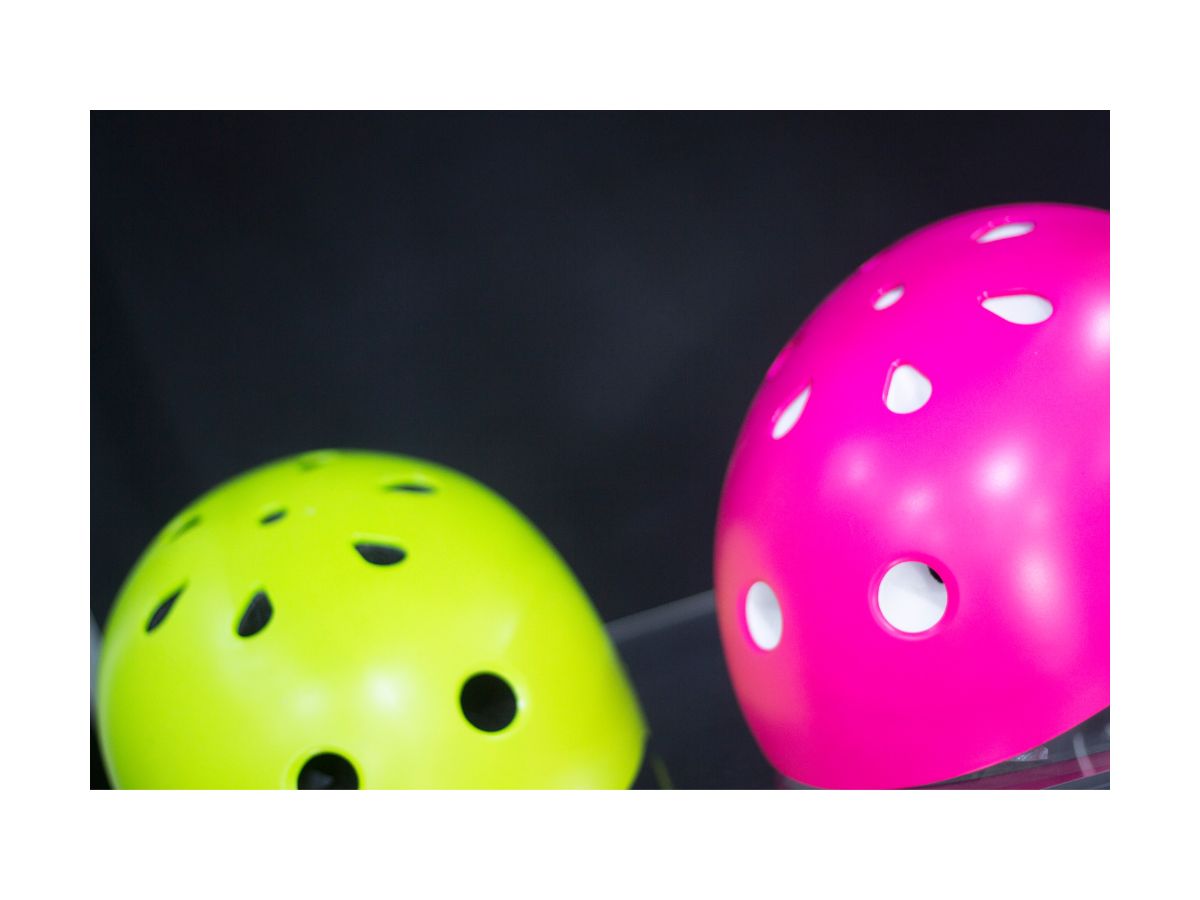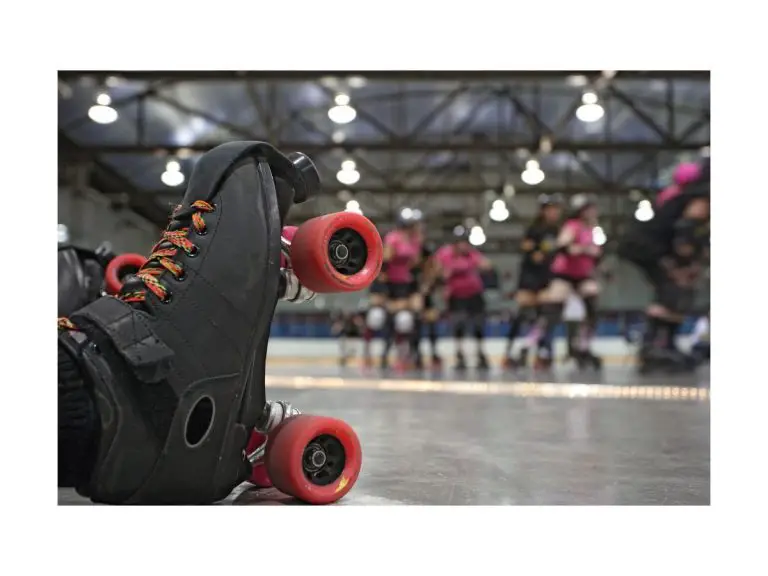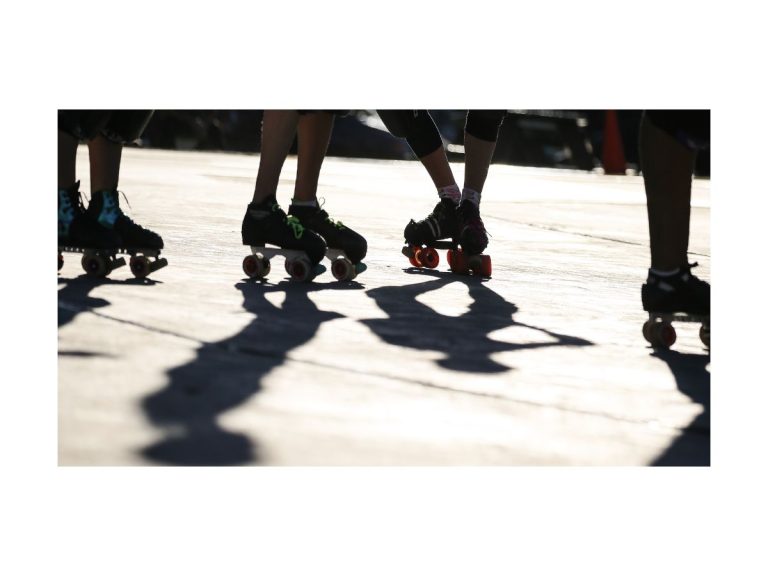3 Helmet Rules Every Roller Derby Player Should Know
Are you looking to get into roller derby? You’ll need to know helmet rules, such as what helmet covers to use. Understanding helmet rules will also help you know what’s happening during jams.
Helmet rules every roller derby player should know include being required to wear a helmet during jams and putting the correct helmet cover over it. Helmet covers have many rules you’ll want to be familiar with, such as who wears what design and if the cover can come off during play.
This article will cover all the helmet rules you’ll need to know about as a roller derby player. I also made sure to go over helmet covers, so you can tell who’s who on the track. Let’s begin!
1. Properly Fitting Helmets are Required
Helmets are the most important part of your uniform in roller derby. They protect you from severe injuries and are required no matter your skill level. Plus, helmets are essential for officials to know who’s playing what position on the track.
Since roller derby is a full-contact sport, you should never play without the proper equipment. You’ll want to use a certified helmet that fits you well. Otherwise, a low-quality helmet would almost be like you’re not wearing one.
You can check that you have a properly fitting helmet by looking for the following:
- The helmet sits about one inch (2.54 cm) above your eyebrows.
- The “Y” shape on the straps is just below your ear.
- The helmet is snug, but you can still move your mouth normally.
- The helmet doesn’t slide around when you shake your head.
- You can only fit one finger between the bottom of the strap and your neck.
An improperly fitting helmet will:
- Slide around.
- Have a loose chin strap.
- Be too high in the front, exposing more of your forehead.
- Have the “Y” on the straps be too low or loose.
If you think your helmet doesn’t fit properly, talk with your coach. They can help you find a better replacement that protects you more. Since you always need to wear a helmet during jams, you want to ensure they keep you safe.
Play will be stopped, and penalties are given if skaters remove their helmets during a jam.
Replacing Your Helmet
It’s also vital that you replace your helmet from time to time. Helmets can take internal damage you can’t see, making them much less effective at protecting your head the next time you fall.
So, if your helmet takes a blow during a jam, you’ll want to replace it as soon as you can to protect yourself. Even if you don’t hit your head, you should still replace the helmet yearly.
2. Helmet Covers
Helmet covers also are an essential part of your uniform. They’re essentially pieces of fabric that go over your helmet. The covers have varying symbols, so you’ll want to know what they mean.
They let officials and skaters on the other team know who’s playing as the pivot and jammer on your team. The colors on the cover must be highly contrasted so the symbols are easy to see.
There are a few different types of helmet covers that you’ll see in roller derby. You’ll get one, depending on the position you play. Here’s a quick breakdown of the covers and who wears them:
- Blocker cover: Blockers are usually not required to wear helmet covers as long as their helmet is already one color. If they need a cover, it’ll be one solid color that’s already part of their uniform color scheme. They can’t have any designs that could be confused for a stripe or star.
- Jammer cover: This helmet cover features a star shape, making it easy to tell who the jammer is.
- Pivot cover: This helmet cover features a line down the middle. It makes determining who’s playing as a pivot easier.
The jammer can transfer their star helmet cover to a pivot through a legal Star Pass. They both need to be in bounds and in play, not on their way to the penalty box, to complete this pass. If the pass is made legally, the pivot can wear the jammer helmet cover, making them the new jammer.
Can You Remove a Helmet Cover Mid-Jam?
That said, anyone mid-jam cannot remove helmet covers except for the skater wearing that cover. So, even your teammates aren’t allowed to touch the helmet cover on your head. If an opponent removes a jammer’s cover, whether on accident or purpose, they can put it back on and regain status as the lead jammer.
If a helmet cover falls off accidentally, a jammer or pivot player can skate out of bounds or in any direction to recover it. However, they can still receive penalties if they go out of play. So, you must put your helmet cover on correctly before starting the jam.
A helmet cover should come off only when a jammer and pivot perform a legal Star Pass. This process makes the pivot the new jammer for the rest of that jam, allowing them to score points.
The opposing team can block a Star Pass. If the pass isn’t successful, the jammer can put the star helmet cover back on, but they lose their Lead Jammer status.
3. Don’t Hit Other Player’s Helmets
Even though roller derby is a full-contact sport, you’re not allowed to touch or grab other players’ helmets. There are specific areas on the body that you can make contact with to block players, but the head isn’t one of them.
These are legal target zones, meaning a skater can be hit on these body parts:
- Arms
- Hands
- Hips
- Chest
- Front and side of the torso
- Mid and upper thigh
These are legal blocking zones, which a skater can use when blocking. That means you can use these body parts to start a block:
- The upper arm, which is from the shoulder to the elbow
- Torso
- Hips
- Buttocks
- Mid and upper thigh
The following are illegal blocking zones in which skaters can’t make contact when performing a block on another player:
- Head
- Elbows
- Lower thigh
- Hands
- Forearms
Notice that the head falls into the illegal blocking zone category. So, it’s also against roller derby rules for you to intentionally make contact with another player’s helmet. Doing so can be dangerous and make the helmet less safe for that player to wear during jams. You’ll be penalized or removed from the game if you ignore this rule.
You must stay aware of other players’ helmets, even in intense jams, to avoid hitting them.
What is Not Allowed in Roller Derby?
You’re not allowed to hit other skaters with your head, hands, or feet during a jam. Since it’s a full-contact sport, many people assume there aren’t rules against hitting each other during play; but there are! You’ll definitely receive a penalty for hitting another player’s helmet.
You must know the legal blocking and target zones on the body before you begin your first jam. You also can’t elbow, punch, or grab any of the other skaters. Plus, there are rules in place about shoving or tripping, so make sure you’re not doing that, either.
Overall, roller derby is a lot of fun and has plenty of rules to protect you and the other skaters. Injuries can happen, but they’re often by accident.







